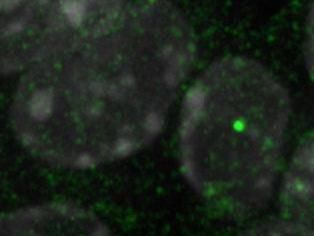Study finds massively parallel sequencing can detect fetal aneuploidies, including Down syndrome
Advertisement
In a study to be presented at the Society for Maternal-Fetal Medicine's annual meeting, The Pregnancy Meeting ™, in Dallas, Texas, researchers will report findings that indicate that massively parallel sequencing can be used to diagnose fetal aneuploidies, including Down syndrome, Edwards syndrome, Patau syndrome and Turner syndrome.
Because of the importance of the clinical data, the abstract, entitled Genome Wide Fetal Aneuploidy Detection by Sequencing of Maternal Plasma DNA: Diagnostic Accuracy in a Prospective, Blinded, Multicenter Study, was given late-breaker status. The study demonstrated that it was possible to use massively parallel sequencing of maternal plasma DNA in combination with a proprietary algorithm to detect the three most prevalent fetal aneuploidies (an abnormal number of chromosomes in the fetus). With this clinical evidence, this prenatal test may be incorporated into routine prenatal care.
"This is the first prospective, multicenter, blinded clinical study to demonstrate detection of all fetal aneuploidies across the genome. It demonstrates the efficacy of massively parallel sequencing of maternal plasma DNA with optimized normalization," said Diana W. Bianchi, M.D., of the Mother Infant Research Institute at Tufts Medical Center, Boston, Mass., the study's presenting author. "Our sample included 2,882 women undergoing prenatal diagnostic procedures at 60 different U.S. locations. Importantly, this study is representative of clinical practice, by taking into account and reporting results from all whole chromosome aneuploidies."
The study correctly identified 89 of 89 cases of trisomy 21 (Down syndrome) with 100 percent sensitivity and specificity, and had a 100 percent positive predictive value for the three most common autosomal aneuploidies, trisomies 21, 18, and 13. The study also detected monosomy X (Turner syndrome) and other chromosome aneuploidies such as trisomies 16 and 20. This approach, if incorporated into prenatal care, will require far fewer invasive procedures to diagnose fetal aneuploidy.
Most read news
Other news from the department science

Get the life science industry in your inbox
By submitting this form you agree that LUMITOS AG will send you the newsletter(s) selected above by email. Your data will not be passed on to third parties. Your data will be stored and processed in accordance with our data protection regulations. LUMITOS may contact you by email for the purpose of advertising or market and opinion surveys. You can revoke your consent at any time without giving reasons to LUMITOS AG, Ernst-Augustin-Str. 2, 12489 Berlin, Germany or by e-mail at revoke@lumitos.com with effect for the future. In addition, each email contains a link to unsubscribe from the corresponding newsletter.
Most read news
More news from our other portals
Last viewed contents

Sewing DNA thread with lasers, hooks and microbobbins
Successful Pilot Study for Non-Invasive Prenatal Diagnostic Test to Determine Trisomy 21
Multitarget Drugs against Prion Diseases - Hybrid lipoic acid derivatives to attack prion disease on multiple fronts

























































